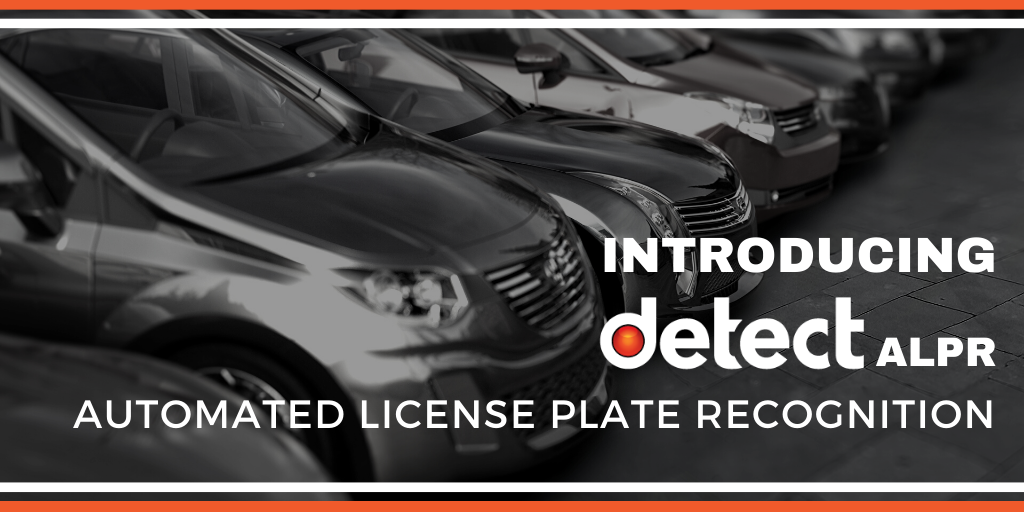Automated License Plate Recognition (ALPR) systems are in use today to capture license plate data in all manner of situations: at traffic lights, in parking garages, at hotel gates – anywhere that traffic flow needs to be monitored and regulated. The process is, in theory, simple:
- A sensor automatically captures an image of a vehicle’s license plate;
- That image is read into into alphanumeric characters using optical character recognition or similar software;
- The result is compared to one or more databases of vehicles of interest; and
- An officer or other interested party is alerted when a vehicle of interest has been observed.
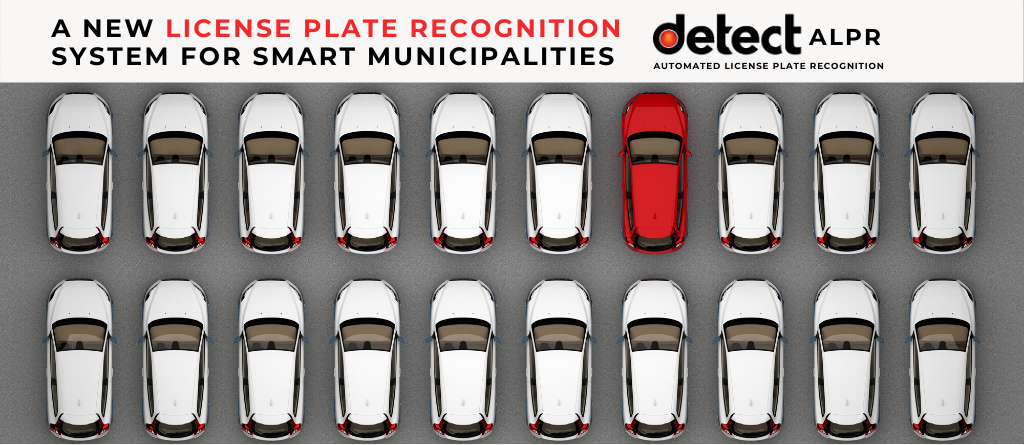
DETECT Automated License Plate Reporting System
The DETECT Automated License Plate Reporting System is a brand new, complete end-to-end license plate capture, notification, and management system consisting of hardware and software elements to provide proactive response and forensic information that can be linked with surveillance video footage. The system was built in response to a number of customer requests for a more affordable plate reading system that can serve as a stand-alone system, or integrate directly with DETECT VMS for more robust and powerful incident alert and monitoring that ties into new or existing surveillance video capabilities.
In order to best fill a number of requirements, the DETECT License Plate Capture Software (LPCS) is flexible enough to operate either embedded in a camera, residing on a server, or utilizing a hybrid method that takes advantage of both camera and computer hardware. The use-case and camera selection will inform the best method to implement:
- Embedded approach: Executing the license plate capture function on the camera reduces the server processing load, and may reduce server cost. This approach is dependent upon the camera resources being robust enough to handle the conversion work load.
- Server approach: Perhaps you already have an analog camera that is unable to execute code, therefore the capture data would be forwarded to a server, and all the process steps would be handled there.
- Hybrid approach: There may be advantages to running some steps on the camera, and the balance on a server. Conditions that may dictate this type of operation include potential resource limitations of the camera or scene activity. Another advantage of the hybrid approach is saving potential license plate captures on the camera’s SD card, which minimizes the potential to lose license plate captures in the event of power or network outages.
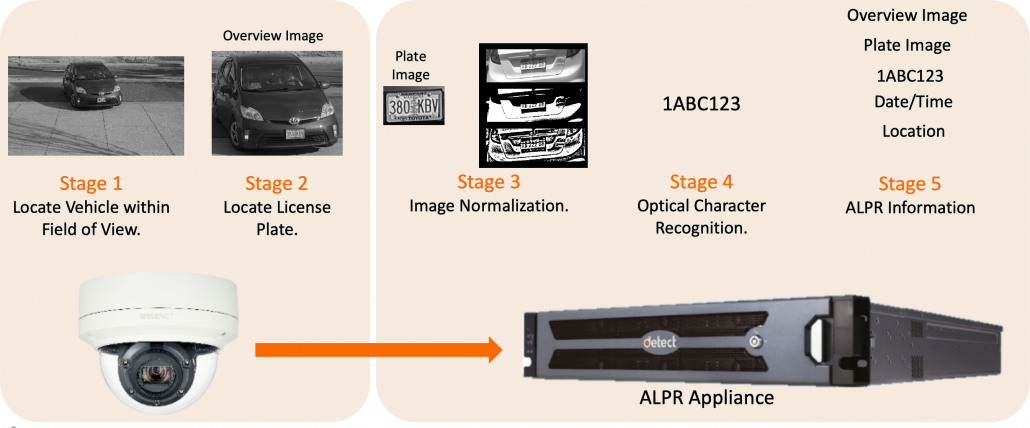
DETECT Network Video Recording (NVR) software is used to manage, store, and provide ALPR and surveillance camera information. DETECT Authentication and Management is used to handle administration and management of system assets, end user capabilities, and user activities.
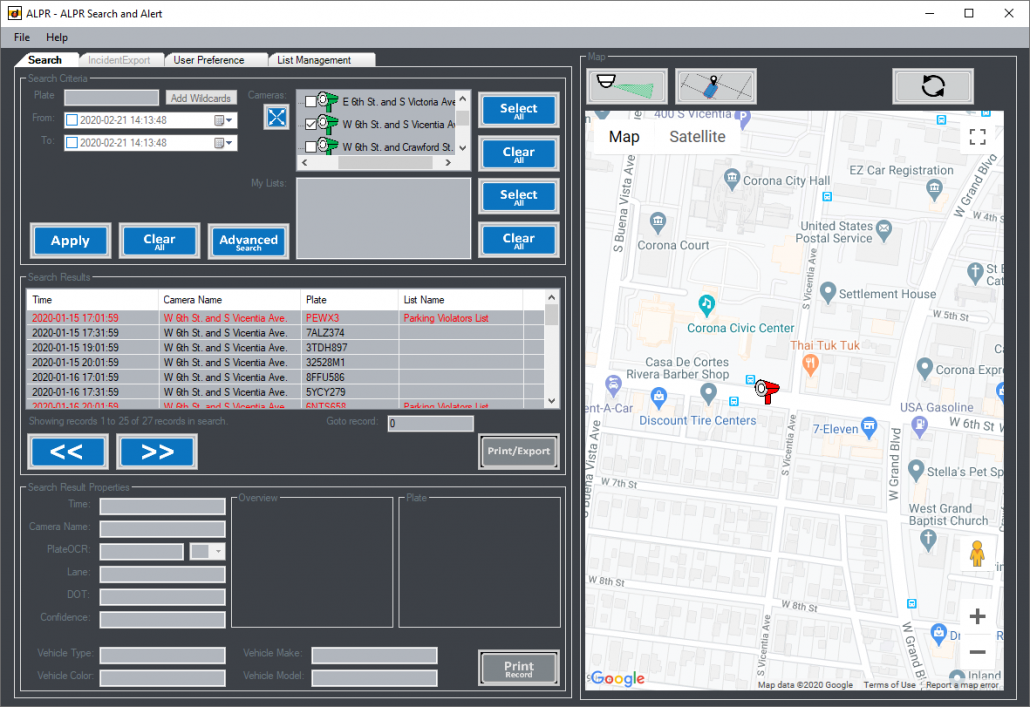
Designed From The Ground Up
Our customers asked, and we listened. Over the past 18 months, our research and development team—in conjunction with multiple agencies—have developed a deeper understanding of the technologies involved in ALPR, and have developed new ways to achieve a high success rate of clean plate reads. Our new software includes a more effective OCR, recognizes and accounts for commonly misread characters, has sophisticated list building and sharing capabilities, and takes vehicle speed and environmental conditions into consideration.
There are many factors that impact the successful deployment of a municipal-wide ALPR strategy, and we have learned that it is definitely not a one size fits all proposition. As part of our research, DETECT currently has active ALPR cameras in different locations to define a variety of environmental and deployment conditions that our software team is continues use to optimize both the new software ALPR engine and backend database application.
There are currently three levels of DETECT ALPR in the testing and demonstration phase.
- Resolve: Our lowest cost option, for use with a single camera.
- Verity: A single user option that can be used with up to four low-traffic volume cameras
- Affirm: A multiple user option that can be used with up to ten low-traffic volume cameras
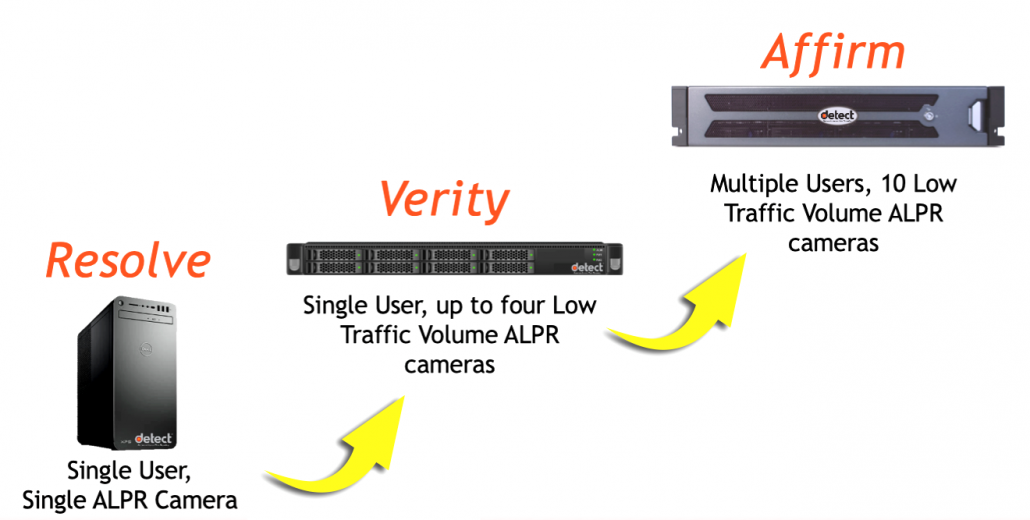
One key benefit will be the ease of sharing both the ALPR data and corresponding surveillance video footage with Public Safety agencies, making this software an excellent choice for businesses or schools who need to keep track of who’s coming and going.
Contact DETECT for more information or a demonstration of the software.

